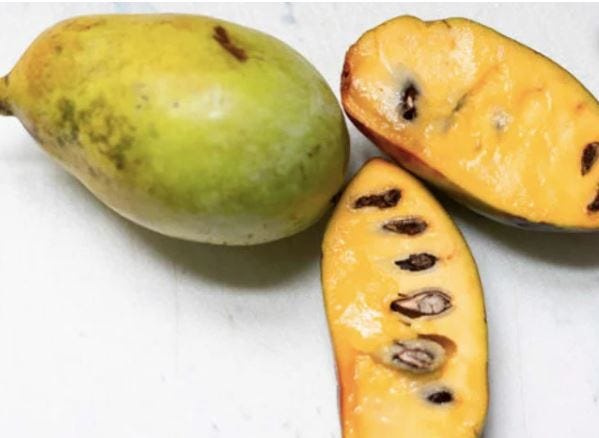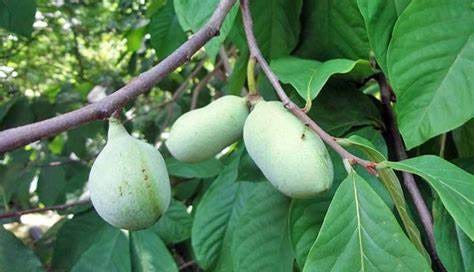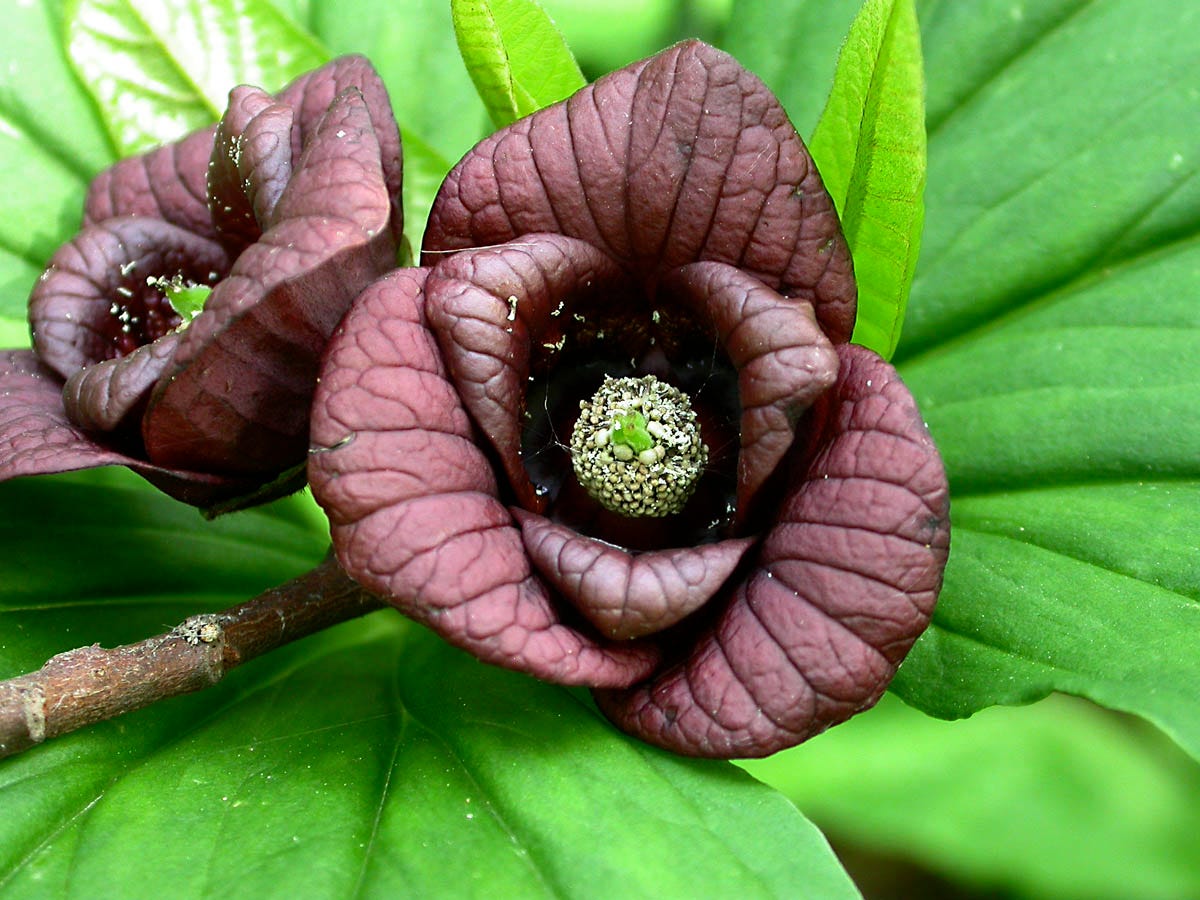The Paw Paw tree, scientifically known as Asimina triloba, is a unique and lesser-known native North American tree that bears the largest edible fruit indigenous to the North American continent. Also called the "custard apple" or "poor man's banana," the Paw Paw tree is found primarily in the eastern and Midwest regions of the United States, thriving in rich, moist soils along riverbanks and in wooded areas.


Paw Paw trees are typically small to medium-sized, ranging from 15 to 30 feet in height. They have been known to adopt a bushier habit, reaching 3 - 5 feet when growing wild under a mottled forest canopy. Their leaves are large and drooping, creating a tropical feel that provides shade and contributes to their distinctive appearance. These trees produce greenish, elongated fruits that resemble a cross between a mango and a banana in taste and texture. The creamy, custard-like flesh has a sweet, tropical flavor with hints of banana, melon, and citrus, making it a sought-after delicacy for those who have had the pleasure of tasting it.
I became hooked on Paw Paw after trying some at a local park that has two trees. There are many regional festivals held each year around the country dedicated to the Paw Paw. If you haven’t tried it yet I highly recommend you find someone who has Paw Paws or check out the festival scene before committing to growing them.
Cultivating Paw Paw trees can be challenging due to their specific requirements but not impossible. They do require well-drained, fertile soil so we have our work cut out for us in our clay heavy soil. It also requires cross-pollination with another tree for fruit production. While they produce blooms in the spring, they are not pollinated by traditional pollinators like butterflies and bees.
You can check out our Paw Paw video on our Rumble to see exactly what we did.
Not for the Birds or Bees
The pollination process for Paw Paw trees is typically facilitated by insects, primarily beetles and flies, as they are attracted to the tree's unique maroon-colored, foul-smelling flowers.
Here's how the pollination of Paw Paw trees works:
Dioecious Nature: Paw Paw trees are dioecious, which means individual trees are either male or female. Male trees produce flowers with pollen, while female trees produce flowers with pistils, which receive pollen to initiate fruit development.
Attraction of Pollinators: The unique scent and color of Paw Paw flowers attract beetles and flies, which are the primary pollinators for these trees. The flowers emit a strong, slightly putrid odor, which mimics the smell of carrion (yum). This scent attracts insects looking for a place to lay their eggs, thinking the flowers are a suitable spot for their larvae.
Pollination: Beetles and flies visit the male flowers first, where they come into contact with pollen. Then, they move to the female flowers in search of more suitable egg-laying sites. In the process, they transfer the pollen from the male flowers to the receptive pistils of the female flowers, fertilizing them.
Fruit Development: Once pollination occurs, the fertilized female flowers develop into fruit. It can take some time for the fruit to mature, often several months, and it typically ripens in late summer or early fall.
Genetic Diversity: Cross-pollination between two genetically distinct Paw Paw trees ensures genetic diversity in the offspring, which can lead to healthier and more robust fruit production.
Who wouldn’t want the smell of roadkill in their garden?
Are they worth it?
Yes, the Paw Paw unique flavor and nutritional value, rich in vitamins, minerals, and antioxidants, make them worth the effort for many home gardeners and small-scale orchards.
The Paw Paw tree holds historical and ecological significance as a native species. Indigenous peoples of North America, including the Cherokee and Miami tribes, cherished its fruit, which they ate fresh or dried. Early European settlers also adopted the Paw Paw. It is said to be a favorite of George Washington and Thomas Jefferson had pawpaws at Monticello. When he was minister to France in 1786, he had pawpaw seeds shipped over to friends there. Lewis and Clark wrote in their journals that they were quite fond of the pawpaw.
In the 19th century, it gained attention as a potential commercial crop. However, it never reached the widespread popularity of other fruits due to its short shelf life and limited adaptability to large-scale cultivation.
Today, it is gaining popularity among enthusiasts and conservationists interested in preserving this distinct part of North American natural heritage. Whether for its delectable fruits, shade-providing canopy, or ecological role, the Paw Paw tree remains a fascinating and valuable addition to the flora of the eastern United States that I am proud to have in my garden now.
Caution!
Researchers have established the presence of harmful substances in pawpaw twigs, rendering them toxic. Additionally, unripe pawpaw fruits harbor a similar level of toxicity as the twigs. Therefore, it is imperative to ensure pawpaw fruits are fully ripe before consumption. Furthermore, it is strongly advised against consuming pawpaw seeds due to their alkaloid content, which can induce vomiting.
Interestingly, at lower concentrations, these toxic compounds may possess potent medicinal properties. Annonaceous acetogenins, a group of compounds found in pawpaw leaves and twigs, exhibit remarkable anti-cancer potential, paving the way for their future development into commercial anti-cancer drugs.
Despite its inherent toxicity, ripe pawpaw fruits offer exceptional nutritional value, surpassing the nourishment provided by common fruits like apples and grapes.




